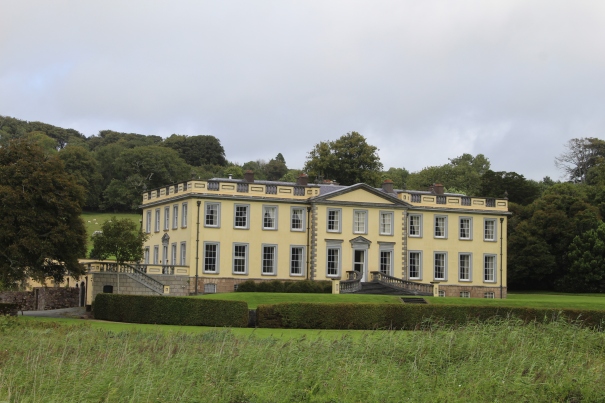

2024 Diary of Irish Historic Houses (section 482 properties)
To purchase an A5 size 2024 Diary of Historic Houses (opening times and days are not listed so the calendar is for use for recording appointments and not as a reference for opening times) send your postal address to jennifer.baggot@gmail.com along with €20 via this payment button. The calendar of 84 pages includes space for writing your appointments as well as photographs of the historic houses. The price includes postage within Ireland. Postage to U.S. is a further €10 for the A5 size calendar, so I would appreciate a donation toward the postage – you can click on the donation link.
€20.00

donation
Help me to pay the entrance fee to one of the houses on this website. This site is created purely out of love for the subject and I receive no payment so any donation is appreciated!
€10.00
Ballynatray house was built in 1795-97 for Grice Smyth (1762-1816) incorporating some of the walls of a much earlier house, which was itself built on the foundations of an old castle. Nearby there are the ruins of a medieval abbey, Molana Abbey, located in the ground of the house. The house is not open to the public but the garden is part of Revenue Section 482 list, and there are cottages on the estate that one can rent for self-catering.
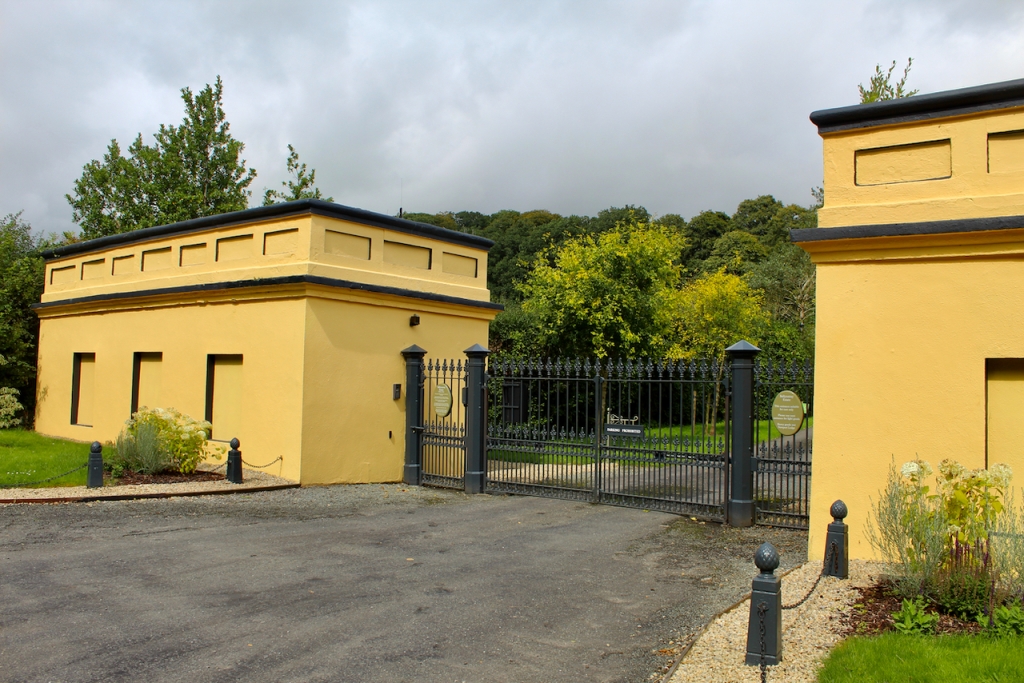
The house’s website directs visitors to park at Templemichael car park and walk up the road along by the estuary of the Blackwater River to the gates of the estate. The Historic Houses of Ireland website tells us that Templemichael Castle is one of three tower houses guarding the Rincrew headland, once home to a Preceptory of the Knights Templar. [1] It is now a ruin.
It was a bit of a hike to reach the gardens of Ballynatray. Once we visited the abbey, which is signposted, it was hard to know where to go, and we didn’t want to wander where we were not wanted. Perhaps I missed the main garden though – the website pictures a kitchen garden but we didn’t find that. We saw mostly lawn, stone walls and hedges. It would be really lovely to stay in the accommodation as the estate is remote and picturesque. The house is also available for exclusive rental – I would love to see inside as it is an impressive two storey over basement eleven bay house with has early nineteenth century stuccowork, according to Mark Bence-Jones in his A Guide to Irish Country Houses (1988).
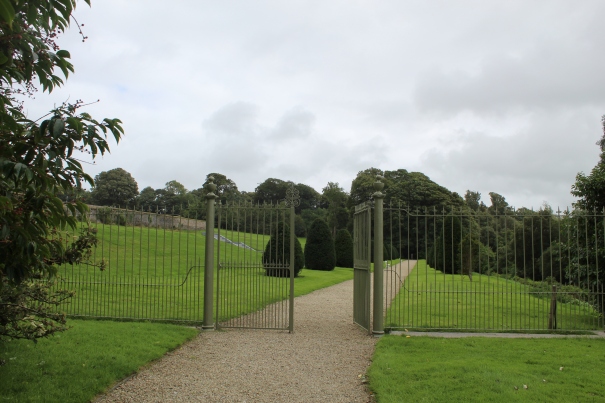
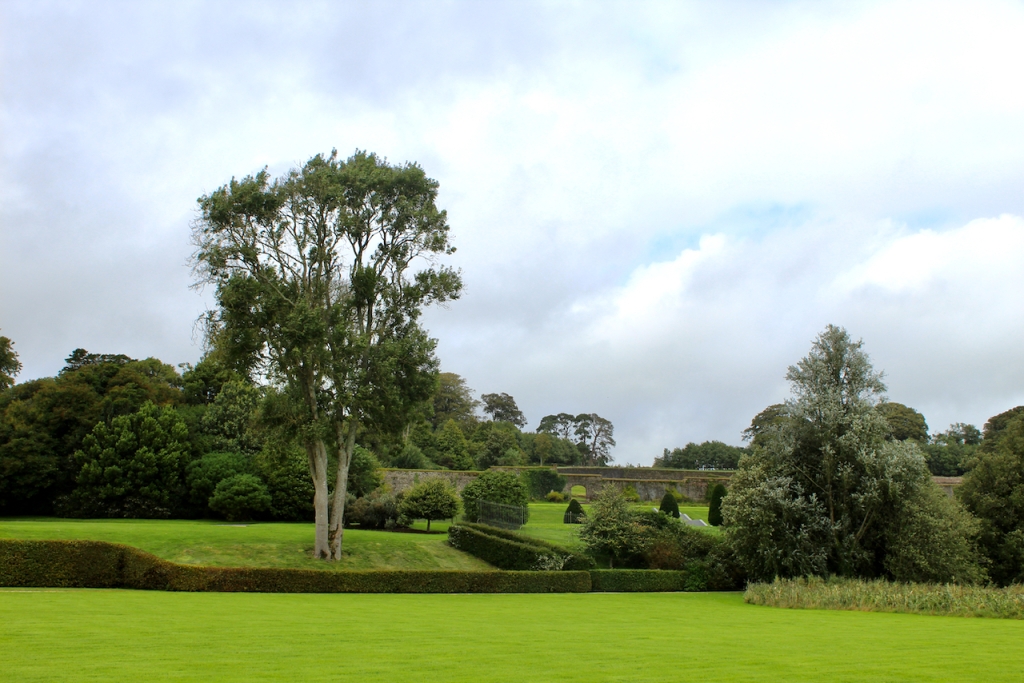
The website tells us that onsite activities at Ballynatray include clay shooting, tennis, croquet and some beautiful tranquil walks on this large private estate. With exclusive booking of the estate and the main house, you can enjoy the indoor heated pool, sauna, Jacuzzi, massage room, snooker room and gym!
Cork architect and builder Alexander Deane (c.1760 – 1806) designed the house for Grice Smyth. According to the Dictionary of Irish Architects, he worked in London as a carpenter and perhaps had some training there. He returned and married in Cork, where he also undertook construction work for the Navy on Haulbowline Island, County Cork, an island where the world’s first yacht club was founded! [2]
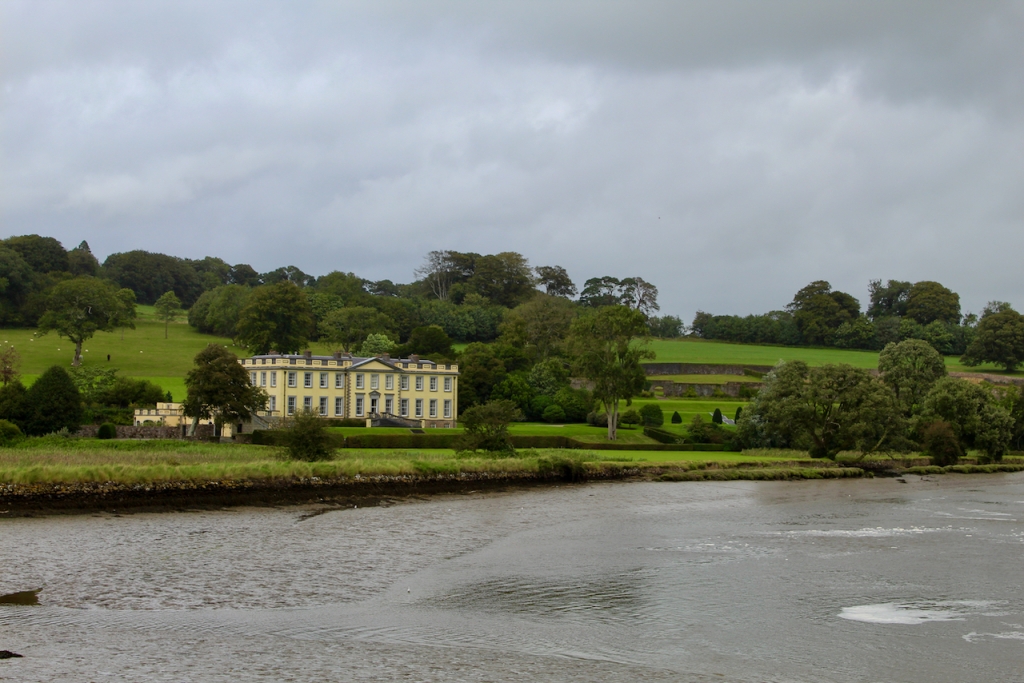
Mark Bence-Jones writes of Ballynatray:
“The house is gloriously situated at a point where the river does a loop. Woods sweep outwards and round on either side and continue up and downstream for as far as the eye can see. On the landward side of the house is a hill, with a deer park full of bracken. There is an extraordinary sense of peace, of remoteness from the world. A short distance from the house is a ruined medieval abbey on an an island which was joined to the mainland by a causeway built 1806 by Grice Smyth, who put up a Classical urn within the abbey walls in honour of Raymond-le-Gros, Strongbow’s companion, who is said to be buried here. Also within the abbey walls is a statue of its founder, St. Molanfide, which Grice Smyth’s widow erected in 1820. The second daughter of Grice Smyth was the beautiful Penelope Smyth, whose runaway marriage with the Prince of Capua, brother of King Ferdinand II of Two Sicilies, caused an international furore in 1836. On the death of Mr Horace Holroyd-Smyth 1969, Ballynatray passed to his cousins, the Ponsonby family, of Kilcooley Abbey, Co. Tipperary.” [3]




We walked first to the abbey, and then onwards to the garden of the house. Walking from the abbey to the garden one has splendid views of the house.
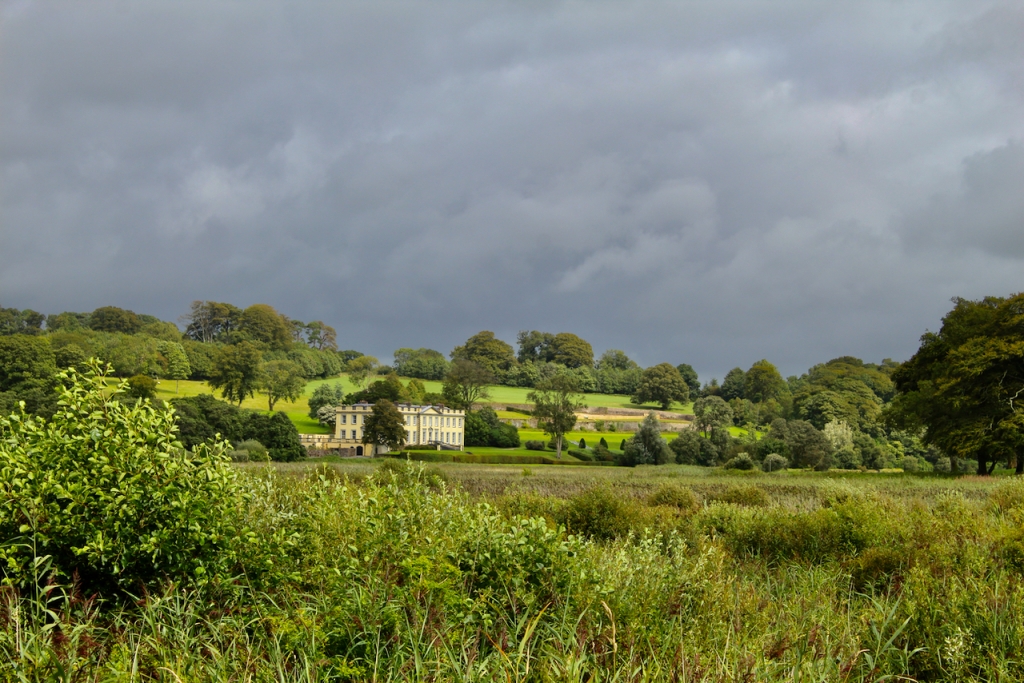
In the early seventeenth century Ballynatray was granted to Richard Smyth, who was brother-in-law to Richard Boyle (1566-1643) 1st Earl of Cork. The Ballynatray website tells us that Richard Smyth built the first house at Ballynatray. He was High Sheriff of County Waterford in 1613. Timothy William Ferres tells us also that Richard commanded as captain in the defeat and expulsion of the Spaniards at Castle Ny Parke, Kinsale, County Cork. [4]
Richard and Mary Boyle had a son, Percy, whose castellated residence at Ballynatray was largely destroyed in the rebellion of 1641.
Percy Smyth served as a Captain in the Crown’s army against the rebels in 1641. He was military governor of Youghal in 1645.
Percy married first Mary Meade, and after she died, he married Isabella Ussher, daughter of Arthur Ussher of Dublin and his wife Judith Newcomen. They had several children. The next to occupy Ballynatray was his son Richard (d. 1681). Richard married first Susanna Gore, daughter of John Gore, of Clonrone, County Clare, but she died and he married Anne or Alice Grice, daughter of Richard Grice, of Ballycullane, County Limerick.
A subsequent house was a Dutch-gabled structure in the 1690s. [see 4] This would have been in the time of the next generation, Grice Smyth. He married Gertrude Taylor, daughter of William Taylor, of Burton, County Cork, and they had a son Richard (1706-1768) who inherited Ballynatray after Grice died in 1724.


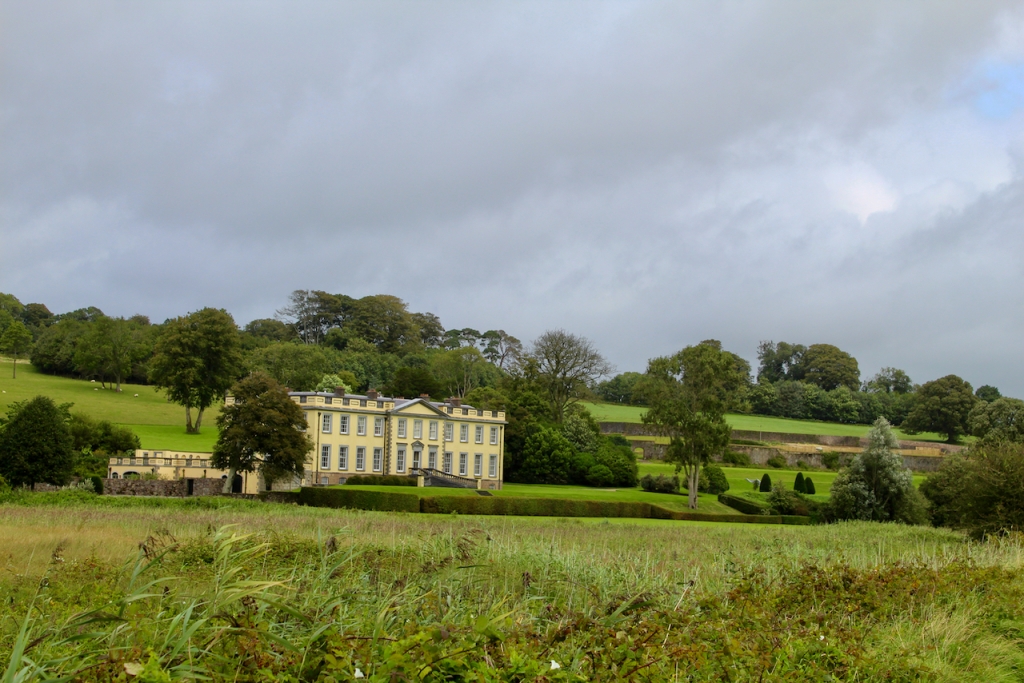
Richard Smyth (1706-1768) was High Sheriff of County Waterford in 1739. Ferres tells us that he wedded firstly, in 1764, Jane, daughter and co-heir of George Rogers, of Cork, and by her had one daughter, Gertrude. After she died, he married Penelope Bateman, daughter of Rowland Bateman of Oak Park, County Kerry. It was their son, Grice (c. 1762-1816) who built the newer house at Ballynatray. An older son, Richard, was High Sheriff of County Waterford in 1793 but died unmarried, so Ballynatray passed from him to his brother Grice.
In 1795 a very large Palladian house was built by Grice Smyth (c. 1762-1816) to the designs of Alexander Dean of Cork. In the same year he married Mary Brodrick Mitchell, daughter and co-heir of Henry Mitchell, of Mitchell’s Fort, County Cork.

Grice Smyth followed in the steps of his forebears and served as High Sheriff of County Waterford in 1803.
Turtle Bunbury writes of Grice Smyth:
“Grice Smyth was a very busy man. He constructed the terraced walled garden and adjoining orchard. He laid down several miles of road along the estate, including the new causeway that linked Molana Abbey to the mainland. In 1806 he reconstructed the ancient abbey, almost as a folly, although he was genuinely convinced that Raymond le Gros was buried there. His widow later erected a classical stone urn to commemorate Raymond’s burial. To restrict flooding he built river walls and embankments. On his wider estate, he then drained and fenced the once barren fields, creating lush pastures and meadows amid the extensive deer park. Many of the oak and beech trees standing today were also planted during this industrious man’s era.” [5]
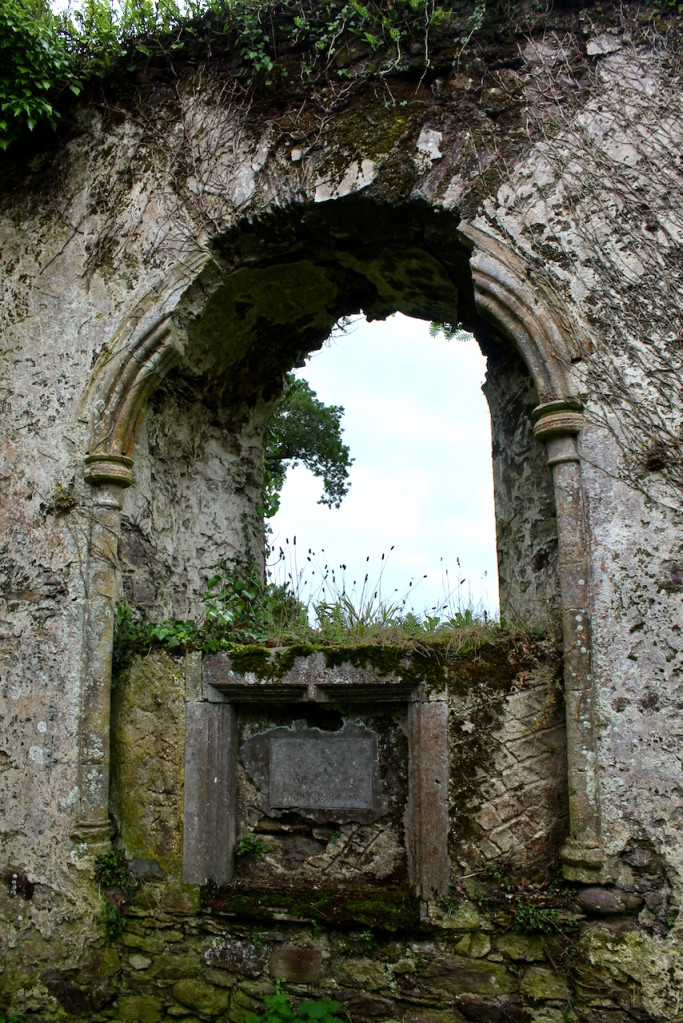

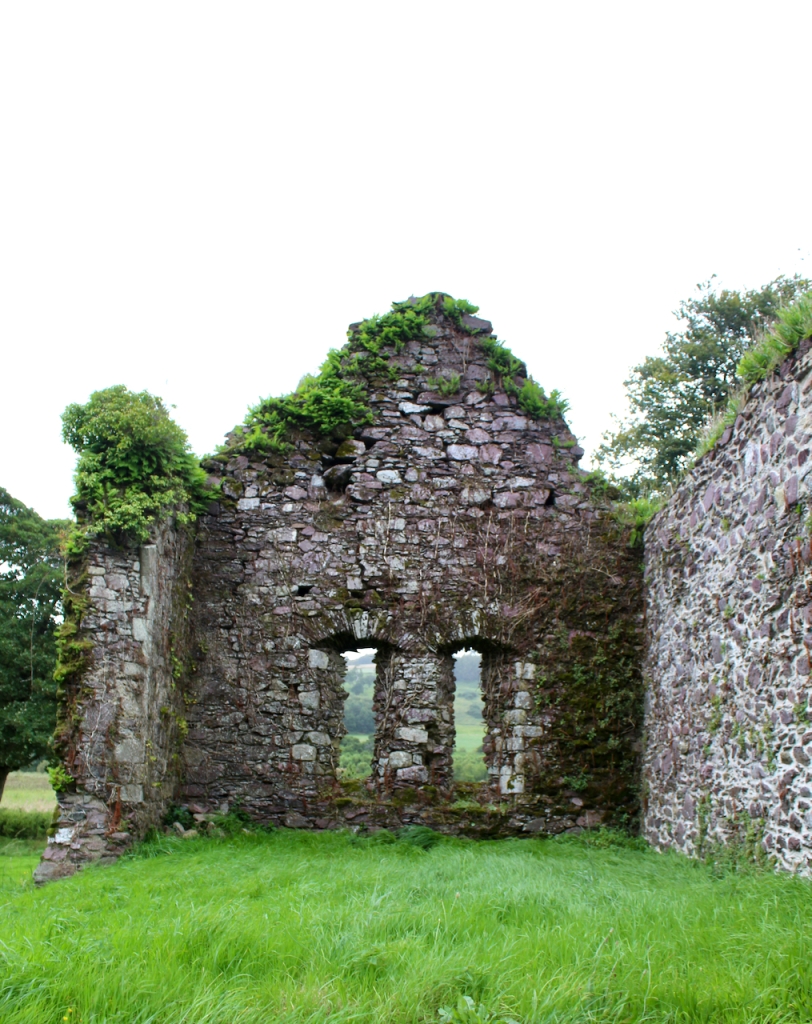



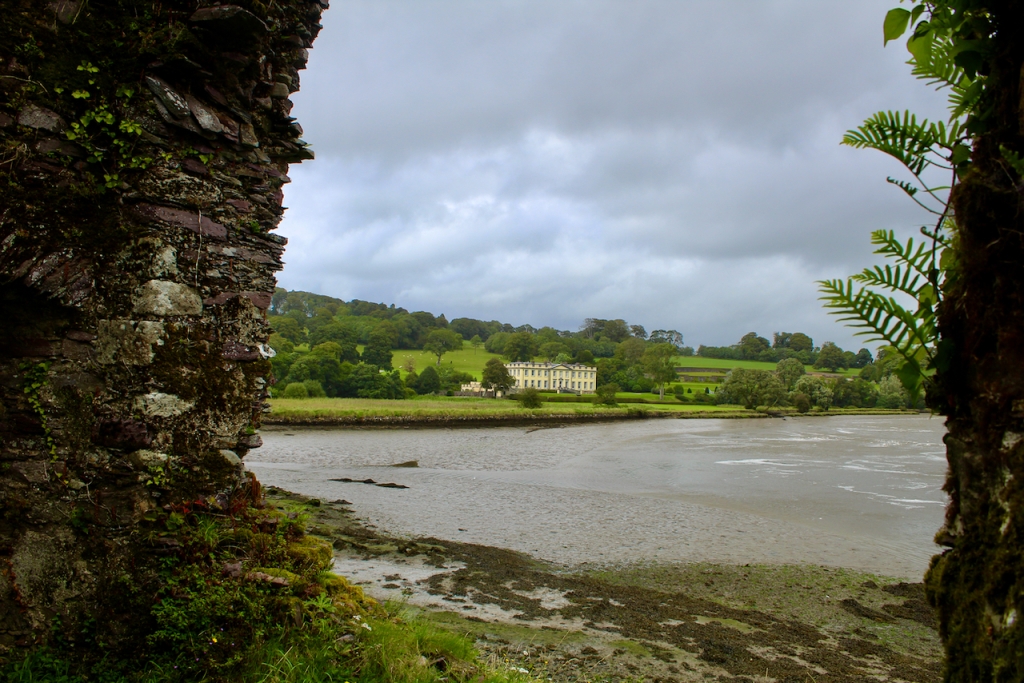
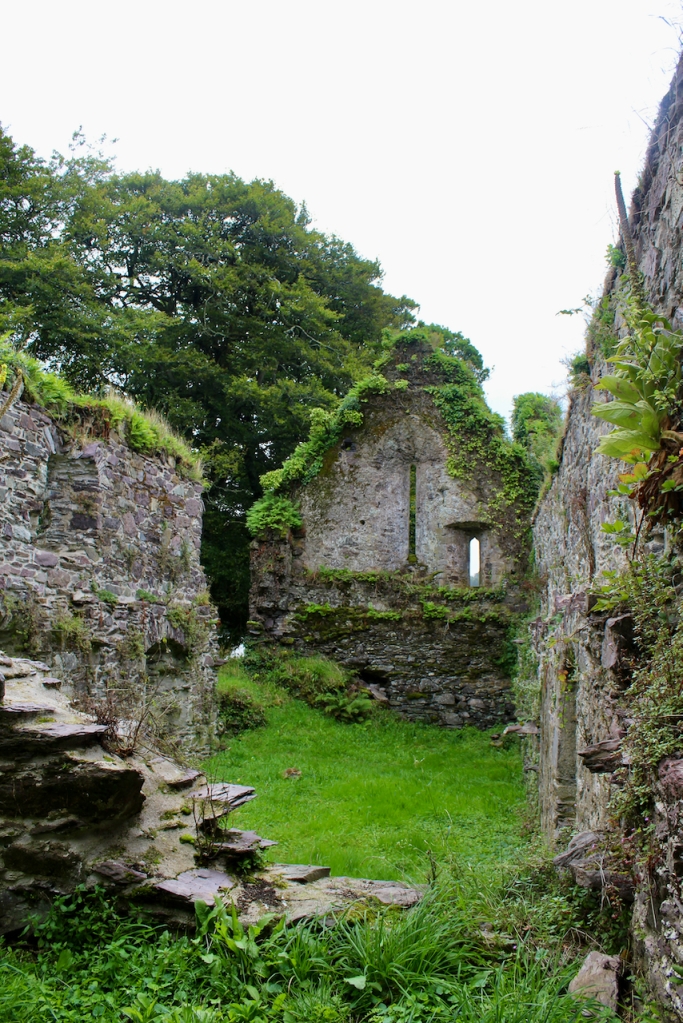
Grice and Mary had several children. The eldest and heir was Richard (1796-1858). The younger son, Henry Mitchell Smyth, married Pricilla Brasier-Creagh, whose father had inherited Creagh Castle in County Cork via his mother’s family. Pricilla then inherited Castle Widenham, County Cork, now known as Blackwater Castle, via her mother, Elizabeth née Widenham.
Grice and Mary’s daughter Penelope married into the Royal Bourbon family of Sicily. Turtle Bunbury tells the story in his entertaining fashion:
“The gossips of Europe had indeed enjoyed considerable discourse over the serious rupture which Miss Smyth brought upon the ancient Royal House of Bourbon. In one corner stood Ferdinand II, King of the Two Sicily’s. In the other, his younger brother, Carlo Ferdinado di Borbonne, Prince of Capua. At the heart of this fraternal squabble was the slender young Penelope Caroline Smyth, the second of Grice and Mary Smyth’s three daughters. She was born in 1815, the year of Waterloo, and grew up on the banks of the Blackwater in the new house at Ballynatray. Contemporaries considered her beautiful...The essence of the scandal was that the dashing Prince fell in love with beautiful Penelope, eloped to Scotland and married her at Gretna Green. The King, his brother, refused to recognise the marriage because Penelope was not of Royal blood. The aggrieved Prince sought to change his brothers’ heart. The King would not relent. The Prince and his Irish Princess abandoned Sicily and settled in Malta where they raised two children. In 1862, after the collapse of the kingdom of the Two Sicilies, King Ferdinand’s son and successor finally gave the Royal seal of approval to the marriage and recognised the couple as Prince and Princess of Capua.” [see 5]
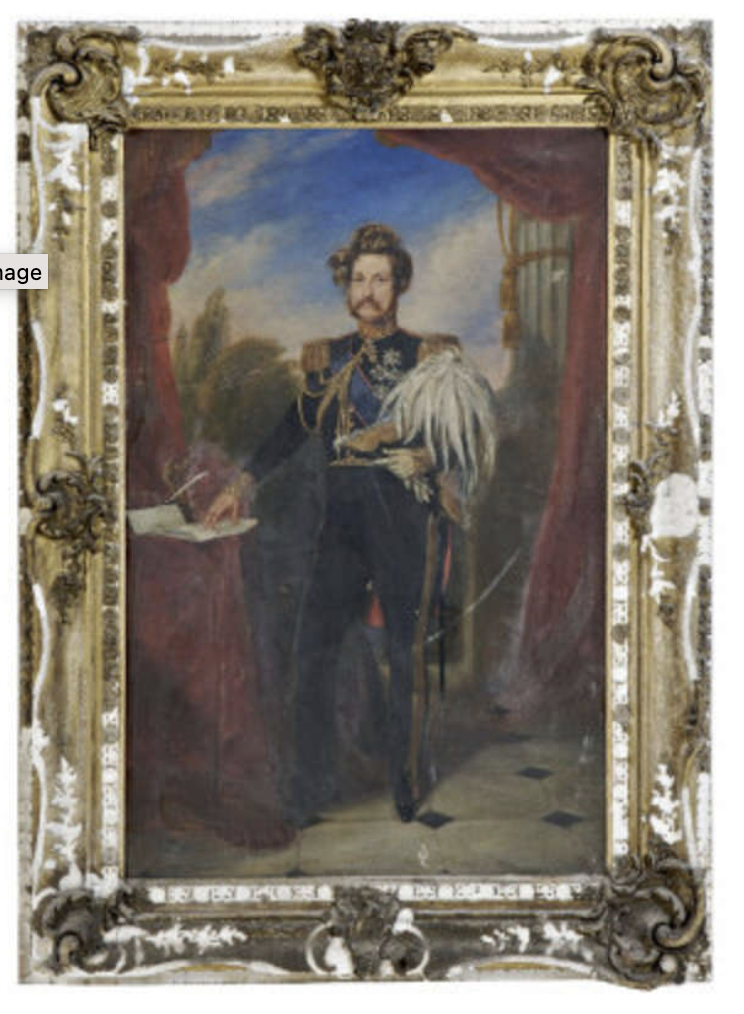

Grice Smyth died at the age of 54. His remains were deposited in the tomb of the Boyle family in Youghal. His widow Mary married Captain John Caulfield Irvine, JP, from Castle Irvine, Co. Fermanagh. As step-father to Richard Smyth, Captain Irvine was to prove a useful addition to the management of the Smyth estates.
The heir, Richard Smyth (1796-1858), served as Justice of the Peace, Deputy Lieutenant, and High Sheriff of County Waterford in 1821. That same year, he married Harriet, daughter of Hayes St. Leger 2nd Viscount Doneraile, County Cork. Much of the decorative plasterwork in the house dates from Richard’s time.
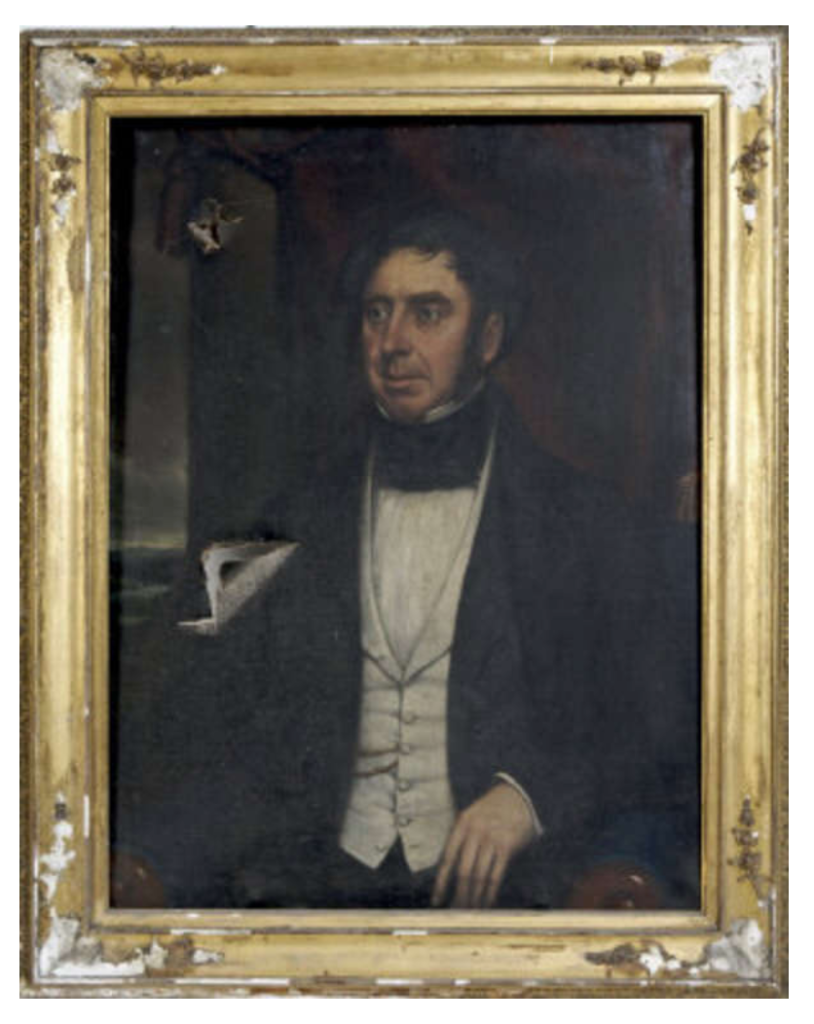

Richard and Harriet had a daughter, Charlotte Mary, who inherited the estate in 1858. In 1848 Charlotte Mary married Charles William Moore (1826-1898), 5th Earl Mountcashell, who assumed, in 1858, the additional name and arms of Smyth. Before she married him, Turtle Bunbury tells a story of how she tried to elope with the gamekeeper’s brother! [see 5]


Charles William Moore served as High Sheriff of County Waterford in 1862. In 1889 his name was legally changed back to Charles William Moore, from Smyth, after his brother Stephen Moore, 4th Earl of Mountcashell died. The 5th Earl of Mountcashell was also 6th Baron Kilworth, of Moore Park, Co. Cork. Through him, Moore Park also passed into the family.
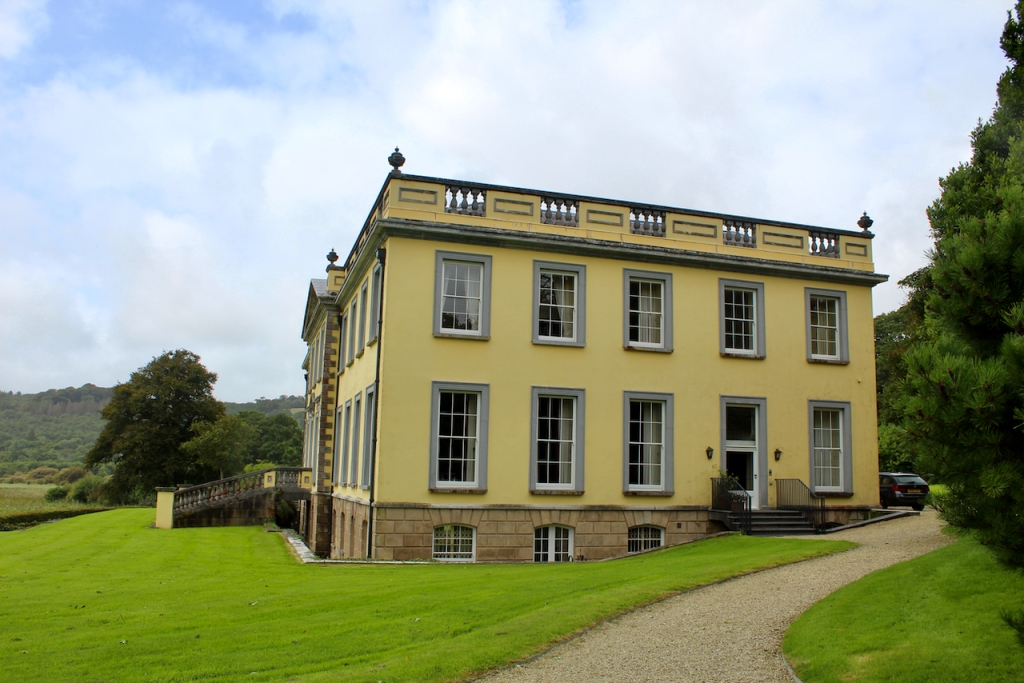
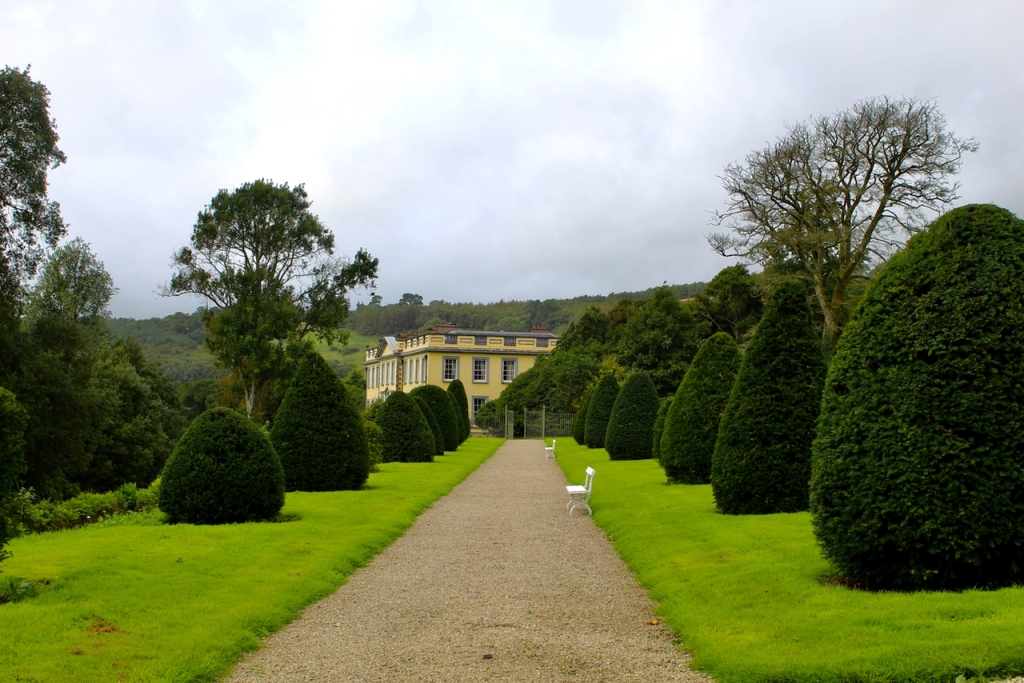
Mary and Charles had a son, Richard Charles Moore-Smyth, but he predeceased his parents at the age of just 28 and his son lived to be only two years old, so their daughter Harriette Gertrude Isabella succeeded to both Ballynatray and to Moore Park.
Harriette Moore married, in 1872, Colonel John Henry Graham Holroyd. When Harriette’s mother Charlotte Mary née Smyth died in 1892, Harriette’s husband changed his surname to Smyth when his wife inherited Ballynatray. Harriet, who had taken the name Holroyd when she married, also changed her name to Smyth at this time. The Colonel served in the military, often abroad.

Harriette and John Henry Graham Holroyd-Smyth had several children. The heir, Rowland Henry Tyssen Holroyd-Smyth, (1874-1959), married, in 1902, Alice Isabelle, youngest daughter of Chambré Brabazon Ponsonby, of Kilcooley Abbey. [see 4]
Turtle Bunbury writes of Rowland:
“His father died when he was 27 years old and he went to assist his mother running the Ballynatray estate. He simultaneously succeeded as Master of the Coshmore and Coshbride Hounds. Hunting was probably the single most important thing in his life, perhaps connecting him back to a father who died before his time. His nephew Eddie Chetwynd-Stapylton recalls: ‘Uncle Rowley always wore a Walter Gilbey bowler hat. He knew the stud-book from A to Z but I think not much else. He let Ballynatray go to rack and ruin so that latterly you could not go down the drive because of the rhododendrons that over-grew it.’ ” [5]
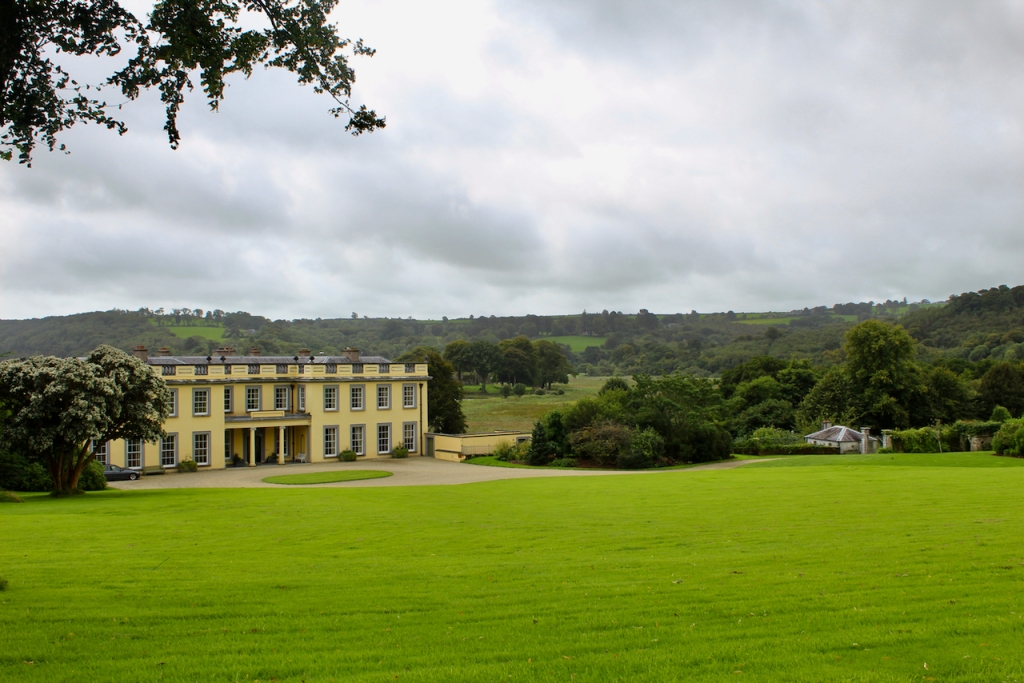

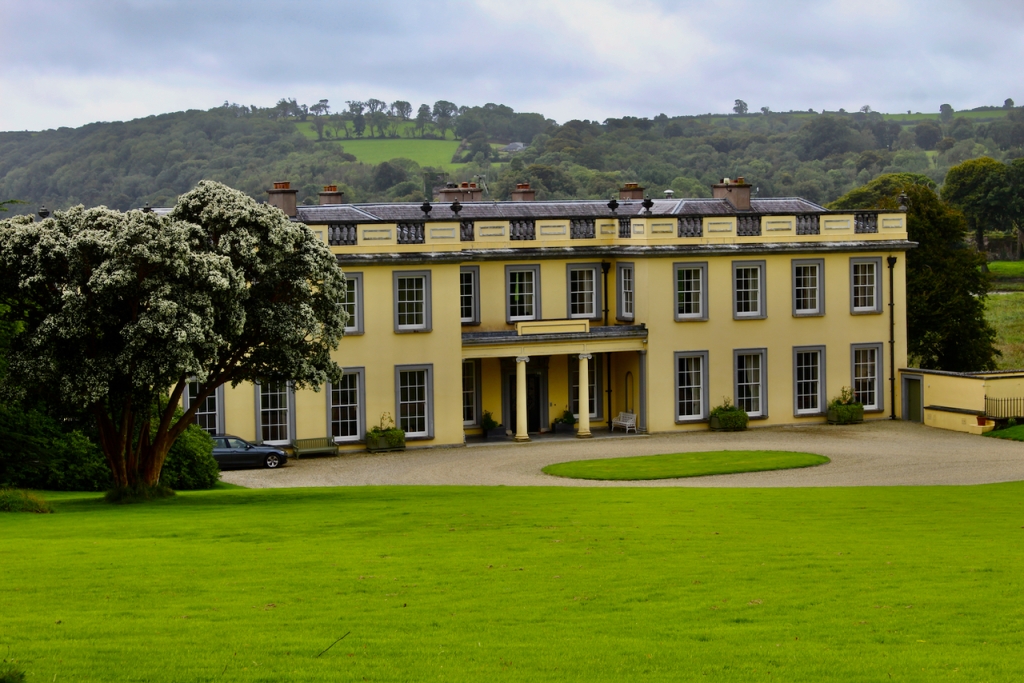
The Historic Houses of Ireland website tells us: “In 1843 the heiress Charlotte Smyth married the 5th Earl of Mount Cashel. Their son Lord Kilworth and their grandson both died so Ballynatray passed to their daughter, the wife of Colonel Holroyd, who assumed the name and arms of Smyth. In 1969 their grandson Horace Holroyd-Smyth bequeathed Ballynatray to his cousins, the Ponsonby family of Kilcooley Abbey, who sold the house to Serge and Henriette Boissevain in the late 1990s. They subsequently carried out a major restoration programme and today Ballynatray is the home of Henry Gwyn-Jones.” [see 1]
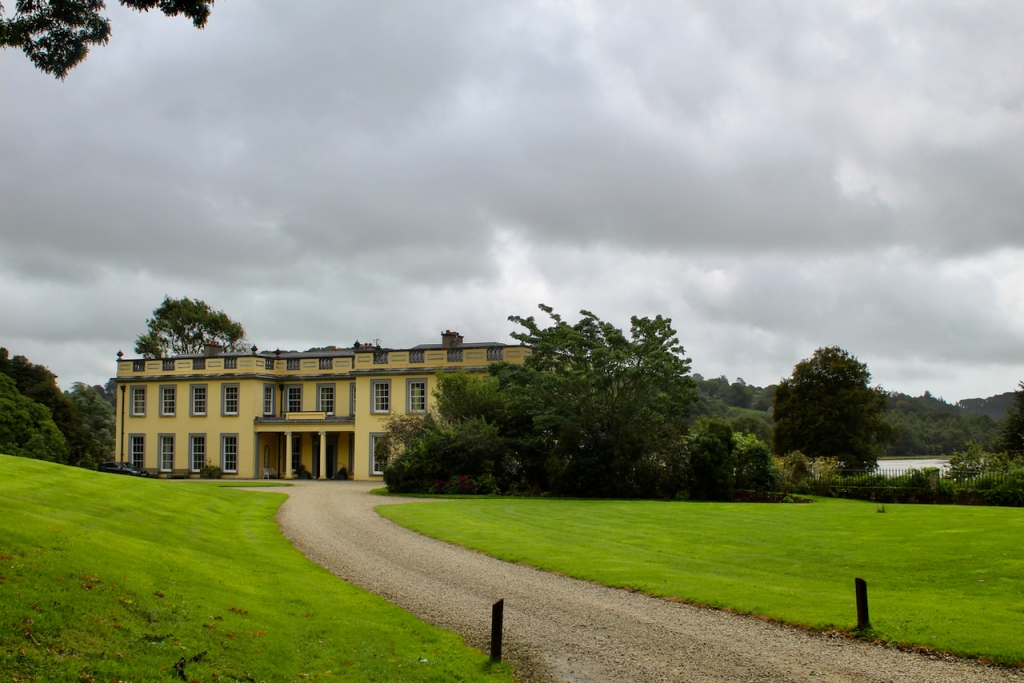
Turtle Bunbury tells us more about Horace Holroyd-Smyth who inherited Ballynatray when he was 54 years old, in 1959. He had a hard time with the upkeep and he was helped by a few loyal staff. Kitty Fleming, granddaughter to the gamekeeper whose brother nearly eloped with Charlotte Mary Smyth, helped him in the house. In 1969, at the age of 64, Horace proposed to Kitty and she said yes.
Turtle writes:
“Ten days before the wedding his brother Oliver returned from Jamaica and a conversation took place between the two men at the summer house in Ardmore. What was said between the two men was of an exceedingly black nature. Oliver appears to have told Horace two things. Firstly, you can’t leave Ballynatray to John Rohan because he’s a Catholic.* Secondly, you can’t marry Kitty Fleming because she is our half-sister. Horace returned to Ballynatray frustrated and angry. Within a week, he was found shot dead beside a dead stag out on the estate. He was not well known as a shooting man. His death was taken to have been ‘accidental’. It was 13th September 1969. It’s unlikely whether anyone will ever know whether it was suicide or an accident.” [6]
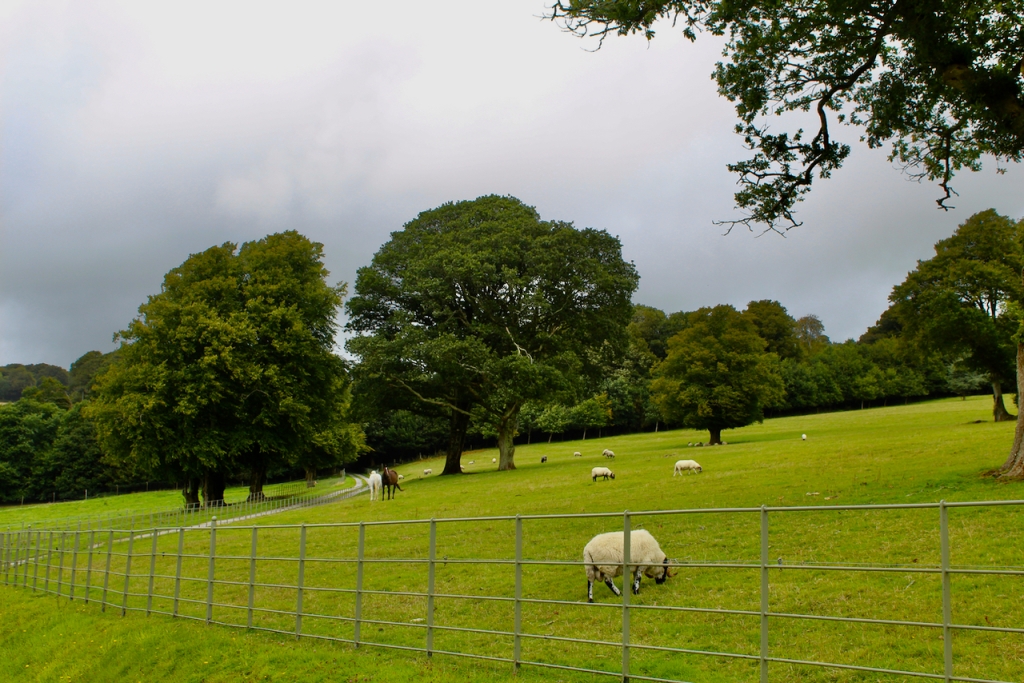


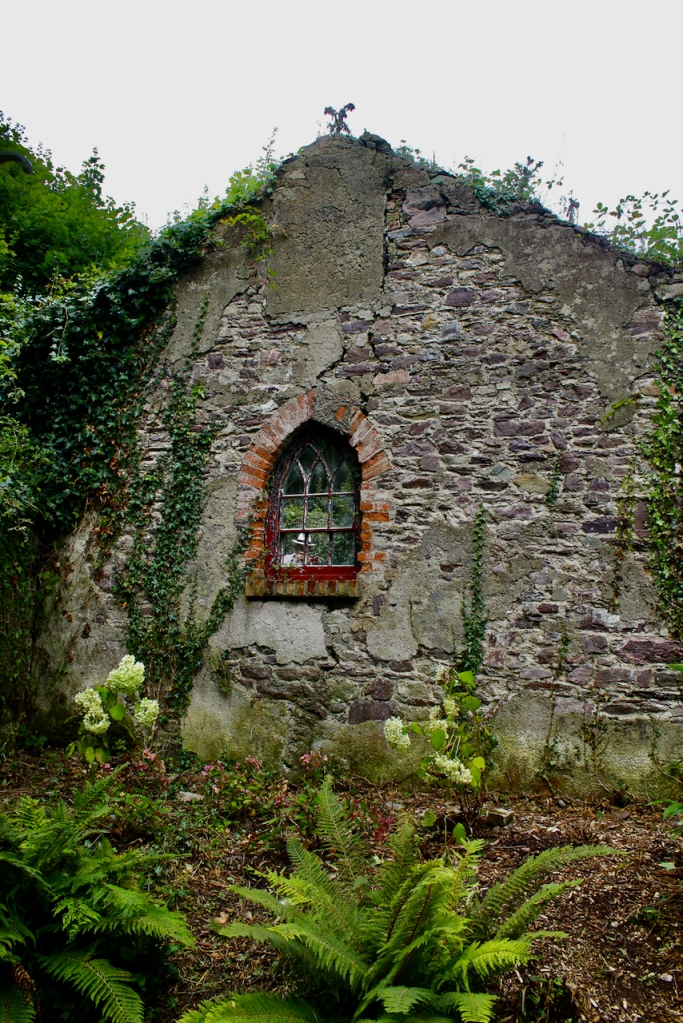
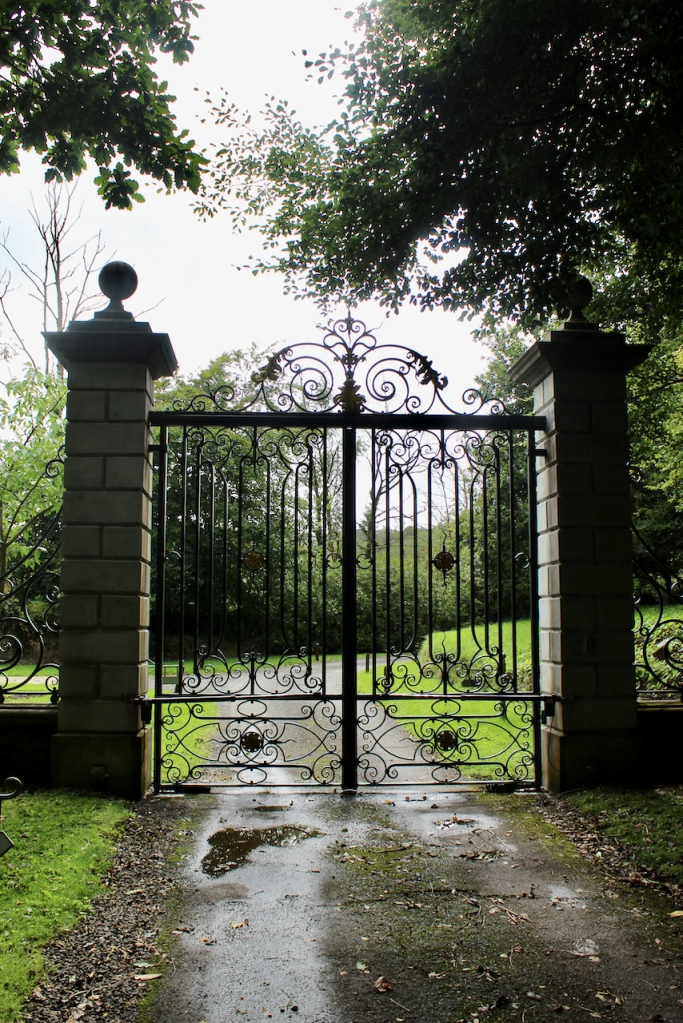

[1] http://www.ihh.ie/index.cfm/houses/house/name/Ballynatray%20House
[2] https://www.dia.ie/architects/view/1438/DEANE-ALEXANDER%5B1%5D#tab_biography
[3] Bence-Jones, Mark. A Guide to Irish Country Houses published by Constable and Company Limited, London, 1988, previously published by Burke’s Peerage Ltd as Burke’s Guide to Country Houses, vol. 1 Ireland, 1978.
[4] http://lordbelmontinnorthernireland.blogspot.com/search/label/County%20Waterford%20Landowners
[5] https://turtlebunbury.com/history-archive/
Turtle Bunbury also tells us what happened to Moore Park.
“For many years, the Holroyd-Smyths had lived between Ballynatray and the 800 acres of parkland at Moore Park. In 1903, with Wyndham’s Land Acts taking effect, Lady Holroyd-Smyth sought a buyer for the estate….Moore Park was [thus] sold to the British War Office to be used as a training camp. Artillery barracks were to be erected and the staff of the Cork district would be stationed there. The construction of an artillery range extending towards Clogheen was also being contemplated. The austere Georgian mansion of Moore Park itself, home to five successive Earls Mount Cashell, was destroyed by an accidental fire in 1908. The house was never rebuilt and the site now belongs to the Teagasc Agricultural Research and Development Centre.“
[6] * Turtle Bunbury writes: “Horace phoned his cousin John Rohan, who was by then in the building business, and offered to leave him the house and 850 acres if John helped fix the roof and renovated the building. John said he could only afford to fit a new roof to stop it from leaking. Horace accepted this and said he woud leave the house to John in his will.” Since his brother instructed him not to leave Ballynatray to John Rohan, Horace left it to the Ponsonby cousin. John Rohan subsequently purchased Woodhouse in Stradbally, County Waterford.
2 thoughts on “Ballynatray Estate, County Waterford P36 T678 – gardens only, no longer on the Section 482 list”